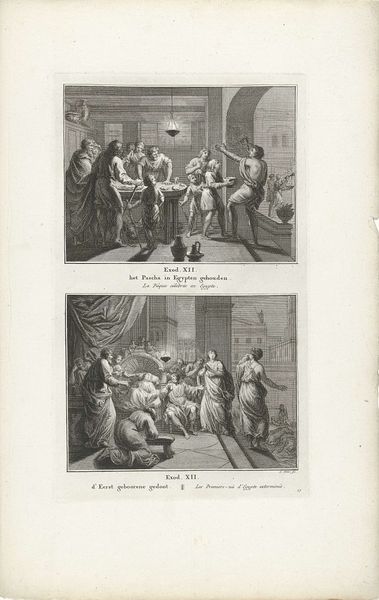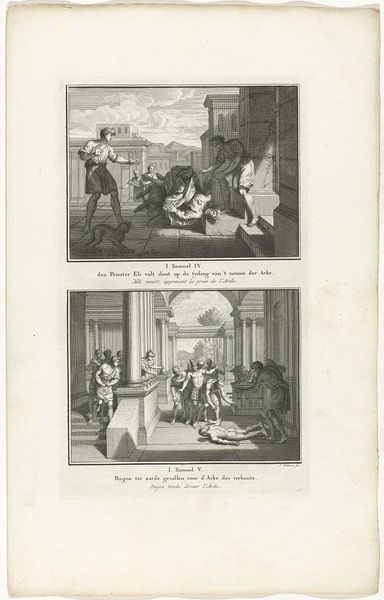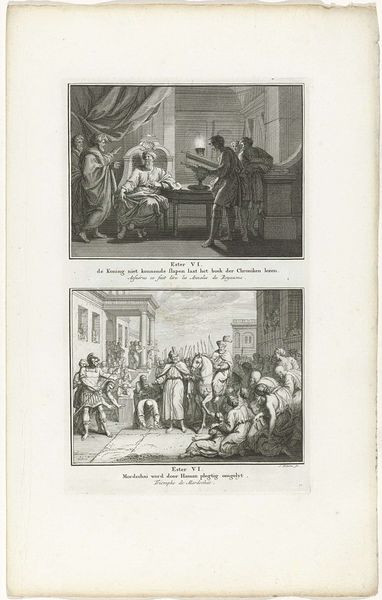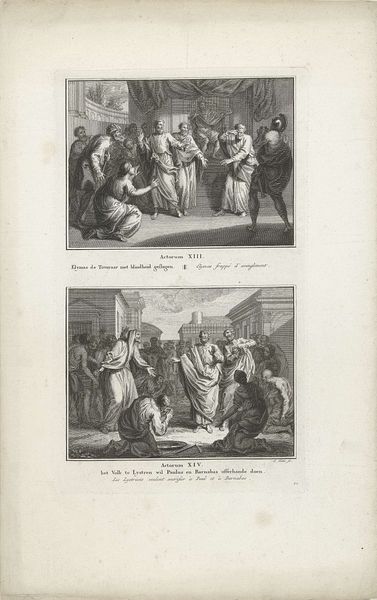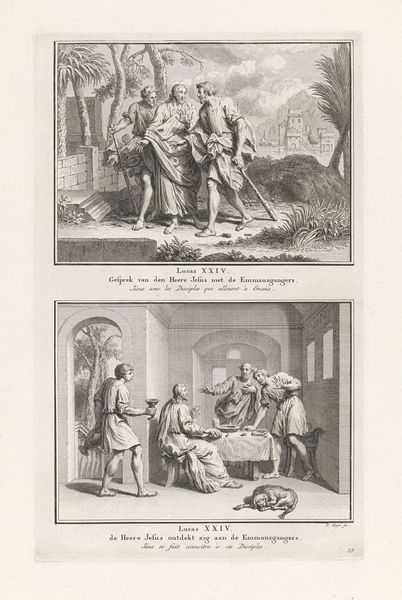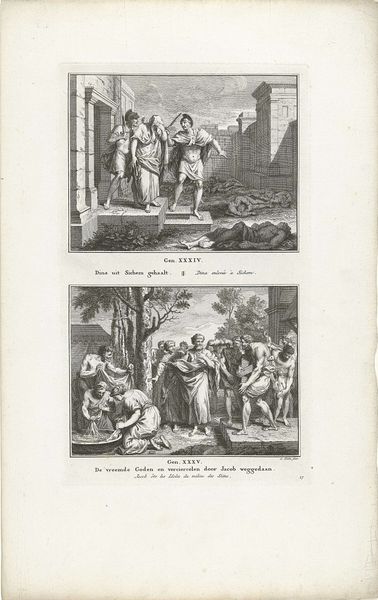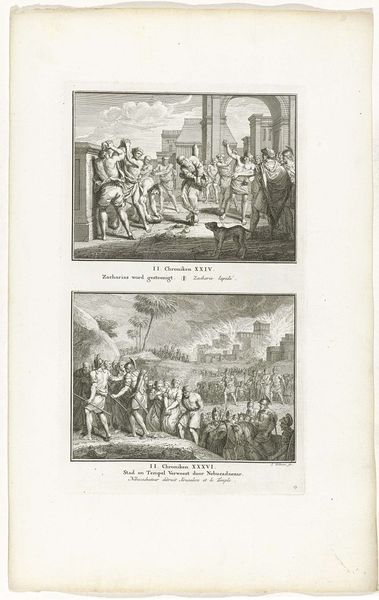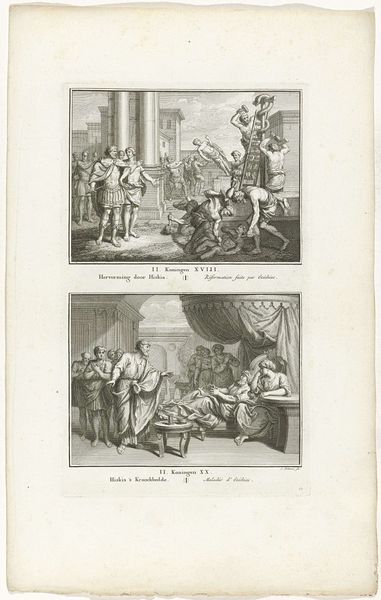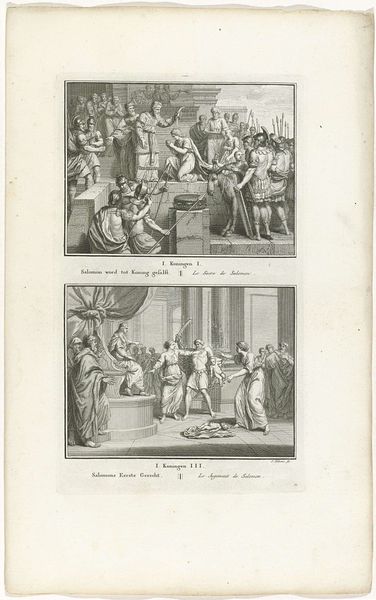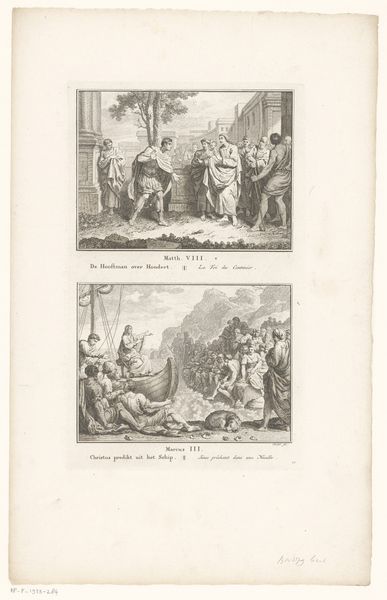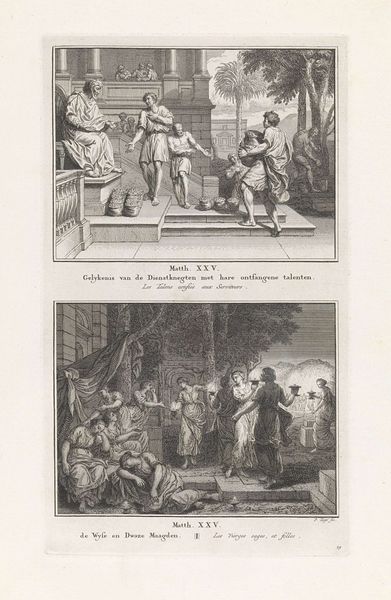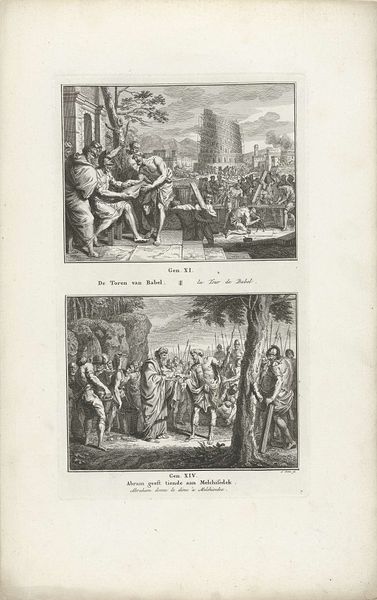
Bekering van de stokbewaarder en Magische boeken te Ephese verbrand 1791
0:00
0:00
simonfokke
Rijksmuseum
Dimensions: height 322 mm, width 190 mm
Copyright: Rijks Museum: Open Domain
Art Historian: Here at the Rijksmuseum, we're looking at a work by Simon Fokke from 1791 entitled "Conversion of the Jailer and Burning of Magic Books at Ephesus." It's an engraving, printed on paper. Curator: It looks like a cleanly rendered document, like something pulled straight from a religious text! The stark contrast adds a strong sense of drama. Given the subject matter, it projects an unmistakable air of zealous conviction. Art Historian: Precisely. The work depicts two distinct biblical scenes from the Acts of the Apostles. The upper panel portrays the conversion of the Philippian jailer, and the lower, the public burning of magic books in Ephesus after conversions to Christianity. Curator: It's intriguing how the medium informs the message here. The sharp lines of the engraving feel deliberate, almost austere, giving both scenes a feeling of official record. What would compel someone to meticulously etch these particular scenes into a printing plate in the late 18th century? Art Historian: In the 1790s, Europe saw immense social and religious upheaval, making the messages within the book of Acts incredibly pertinent. Fokke likely wanted to highlight conversion and purification in response to what he perceived as a moral and spiritual decline around him. Prints like these circulated widely, becoming tools for propagating specific ideologies to broad audiences. Curator: And considering that, the choice of materials suddenly has another layer: printmaking allows these ideas to become almost endlessly reproducible. It underscores the labor and the physical dissemination of religious and moral lessons that resonate with an epoch. What the print depicts meets how the print is physically made, again amplifying its power! Art Historian: The deliberate composition emphasizes order and clarity. This resonates with the didactic intention behind Fokke's creation, where conversion is illustrated as a path to illumination amidst societal unrest. These historical narratives offered then contemporary moral direction for individuals and communities, underlining the pivotal role art can have in navigating shifting belief systems. Curator: Seeing this through the lens of its physical production and broader consumption habits makes me rethink my initial assessment. The engraving goes beyond simple religious illustration, becoming an artifact of socio-political commentary deeply enmeshed in its era. Art Historian: Absolutely. Considering its time reveals much about Simon Fokke's intentions and how such imagery fostered particular forms of civic piety. Curator: Examining the work has underlined just how inseparable message and means really are! Thank you!
Comments
No comments
Be the first to comment and join the conversation on the ultimate creative platform.
